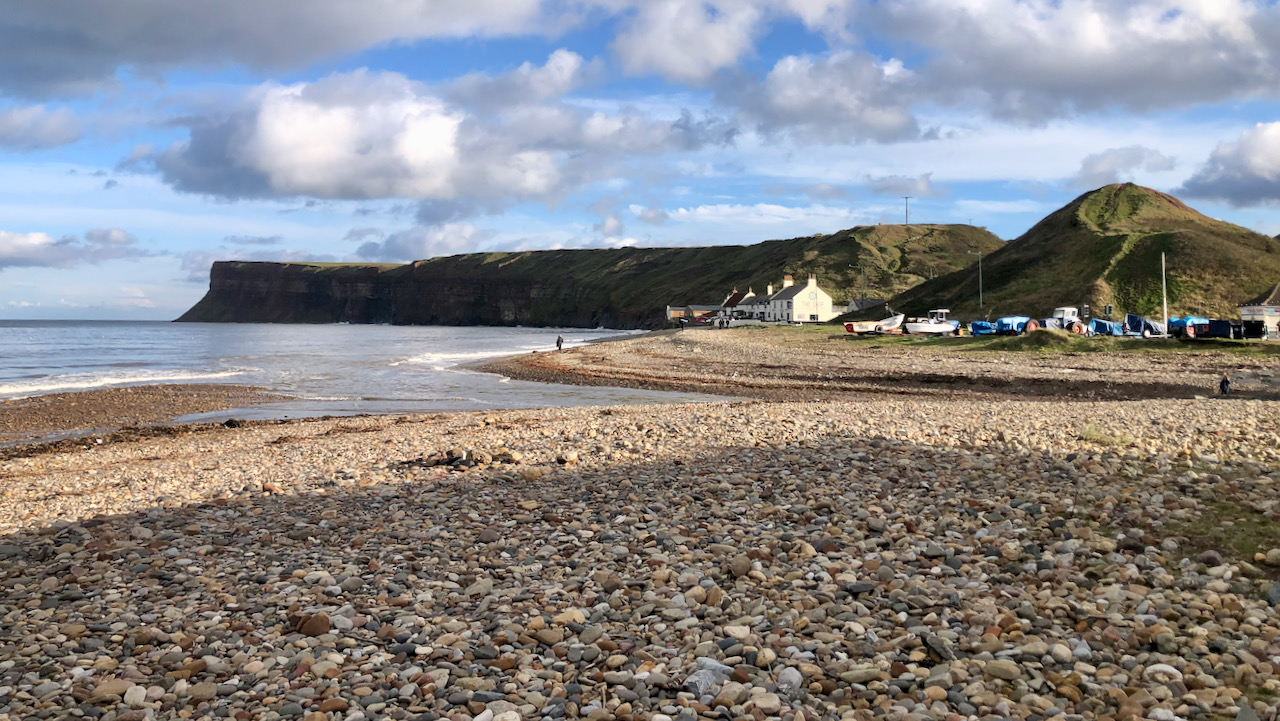An hour or so off high tide at Saltburn, mind you, I’m talking about ‘Old‘ Saltburn here, not the newer ‘by-the-Sea‘ town that sprouted up when the Stockton and Darlington Railway Company arrived, and Henry Pease put up his Zetland Hotel, along with rows of fancy houses, shops, and detached villas all with their distinctive buff coloured brickwork.
Old Saltburn was the original fisherman’s hamlet, nestled right there at the base of that peculiar conical hill Cat Nab. The Ship Inn is just about the only thing left to remind you of those days. They say it’s been around since the 1500s and had a reputation for being knee deep in the smuggling business. It’s been enlarged over the years, and they’ve even spruced it up recently. Some folks tell me, though, they’ve gone a tad too modern with the new ambience.
Now, if you take a look at the old maps, like the 1856 Six-Inch O.S. map, you’ll notice there wasn’t a bridge crossing Skelton Beck back then. It was a dead end. A row of fisherman’s cottages were facing the North Sea, turning their backs to Cat Nab. Perhaps their archaeological footprint remains under the tarmac of the road. At the highest tide, the sea must have lapped on their doorsteps.
It might sound like a tall tale, but it is said there were three other inns or, perhaps, gin shops, alongside The Ship – The Seagull, The Dolphin, and The Nimrod.
On the foreshore, in front of The Ship, a Neolithic polished stone axe has been found. But the earliest records of occupation in Old Saltburn point to a hermitage founded by Roger de Argentum around 1215.
And high up on Cat Nab, there used to be a Bronze Age burial mound, which the antiquarian William Hornsby excavated. Regrettably, it’s now gone. Hornsby also excavated the earliest site of the Anglian period on Teesside, just a few miles to the southwest on Hob Hill. Discovered by ironstone quarrymen in 1909, the 48 burials found probably date back to the sixth century.
Sources
- NATIONAL TRUST HOLDINGS ON THE NORTH YORKSHIRE COAST. Pages 17/18. Oxford Archaeology North. August 2007 [Available online at https://library.thehumanjourney.net/4542/1/Full_Yorks_Coast_Rep.pdf]
- ‘Saltburn by the Sea, Old Saltburn, the Early History of the Fishing Hamlet of Saltburn.’ 2014. Saltburnbysea.com <http://www.saltburnbysea.com/html/old-saltburn.html> [accessed 9 November 2023]

Leave a Reply